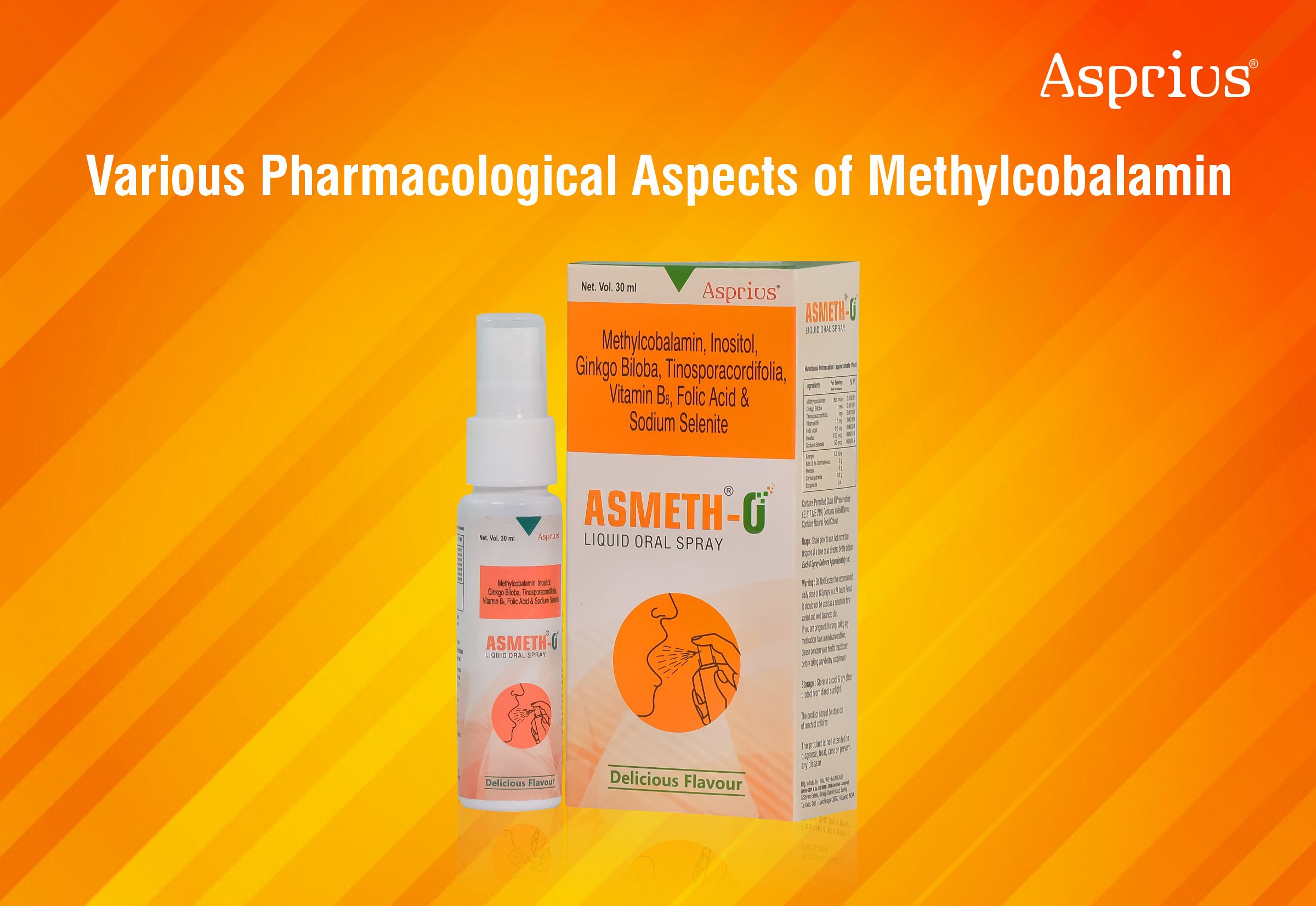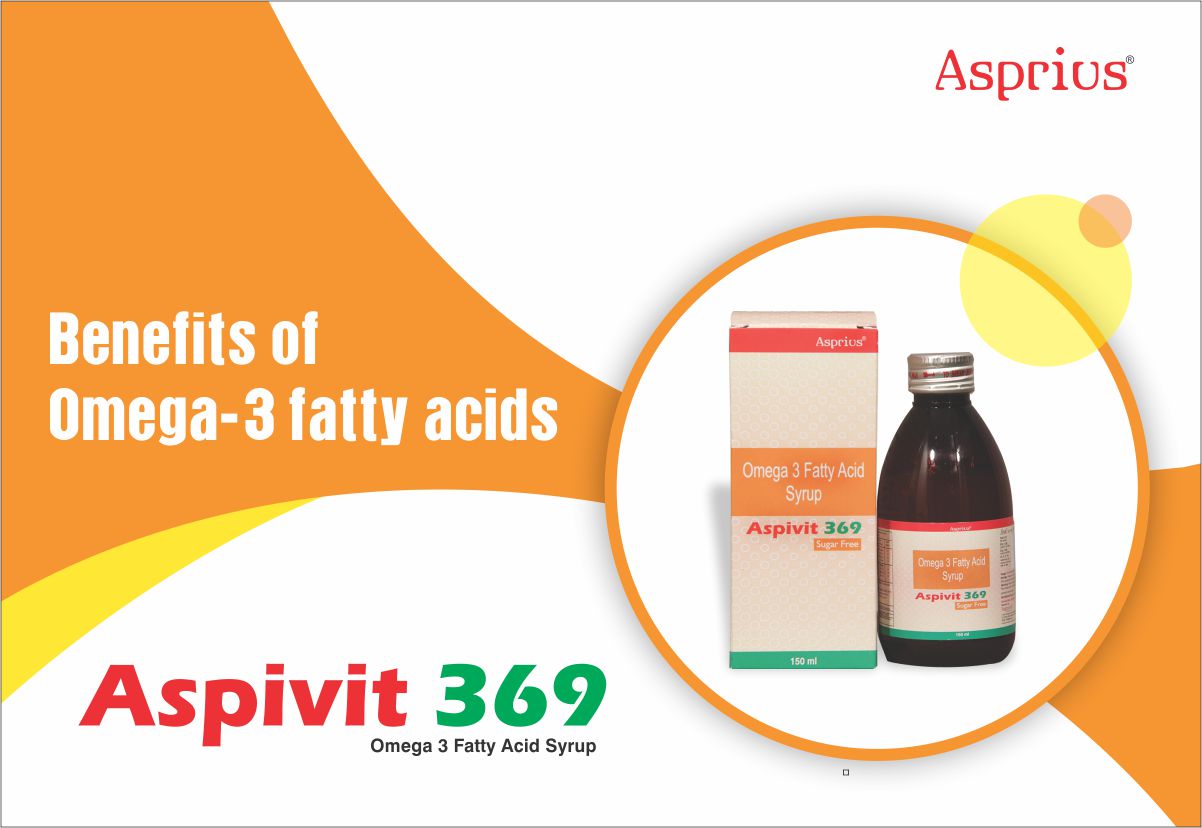ASPIVIT – 369 OMEGA 3 FATTY ACID OVERVIEW

Leading Pharmaceutical consultant and editor-in chief of IJMToday

Over the past 20 years, there has been a dramatic increase in the scientific scrutiny of and public interest in omega-3 and omega- 6 fatty acids and their impact on personal health. Omega-3 fatty acids possess antiinflammatory, antiarrhythmic, and antithrombotic properties; omega-6 fatty acids are proinflammatory and prothrombotic. Increased consumption of vegetable oils high in omega-6 fatty acids (such as corn, safflower, sunflower, and cottonseed oils) and meats from animals that were fed grains high in omega-6 fatty acids has drastically shifted the dietary ratio of omega-6 to omega-3 fatty acids from an estimated 1:1 in the early human diet to approximately 10:1 in the typical modern American diet. Fish and fish oil are rich sources of omega- 3 fatty acids, specifically eicosapentaenoic acid (EPA) and docosahexaenoic acid (DHA), which are present in fatty fish and algae. Alpha-linolenic acid (ALA) is an omega-3 fatty acid present in seeds and oils, green leafy vegetables, and nuts and beans (such as walnuts and soybeans). Linoleic acid, an omega-6 fatty acid, is present in grains, meats, and the seeds of most plants. While omega-3 fatty acids have been used for treatment of many conditions.
Uses and Efficacy
CARDIAC MORTALITY, SUDDEN DEATH, AND ALL-CAUSE MORTALITY
The Diet and Reinfarction Trial (DART) was one of the first studies to investigate a relationship between dietary intake of omega-3 fatty acids and secondary prevention of myocardial infarction. In this study, 1,015 men were advised to eat at least two servings of fatty fish per week, and 1,018 men were not so advised. At the two-year follow-up, the men who had been advised to consume fish had a 29 percent reduction in all-cause mortality but no reduction in the incidence of myocardial infarction. Sudden death caused by sustained ventricular arrhythmias accounts for 50 to 60 percent of all deaths in persons with coronary heart disease (CHD). To date, the largest, prospective, randomized controlled trial on the effects of omega-3 fatty acids is the GISSI-Prevenzione Trial. This study included 11,324 patients with known CHD who were randomized to receive either 300 mg of vitamin E, 850 mg of omega-3 fatty acids, both, or neither. After three and one half years, the group given omega-3 fatty acids alone had a 45 percent reduction in sudden death and a 20 percent reduction in all-cause mortality. A meta-analysis of 11 randomized controlled trials conducted between 1966 and 1999 and including 7,951 patients with heart disease found that dietary and non dietary fatty acids reduced overall mortality, mortality caused by myocardial infarction, and sudden death. The number needed to treat in patients at low risk to prevent one premature death was 250 for one and one-half years, and 24 patients at high risk to prevent one death. The U.S. Physicians’ Health Study surveyed roughly 20,000 male physicians and found no apparent association between fish consumption and supplementation with omega-3 fatty acids and risk for myocardial infarction, non sudden cardiac death, or total cardiovascular mortality. However, men who consumed fish at least once per week had a 50 percent reduction in the risk for sudden death and a significant reduction in all-cause mortality.
A reanalysis of the U.S. Physicians’ Health Study found a significant inverse relationship between blood levels of omega-3 fatty acids and the risk of sudden death in men with no history of CHD. In another study, 10 consumption of 5.5 g of omega-3 fatty acids per month (equivalent to one weekly serving of a fatty fish) was associated with a 50 percent reduction in the risk of primary cardiac arrest. However, these findings were not supported by the EURAMIC (EURopean multicenter case-control study on Antioxidants, Myocardial Infarction and breast Cancer) study, which concluded that fish consumption offered no protection against the risk of a first myocardial infarction. One study showed increased regression and decreased progression of coronary lesions in patients taking 1.5 g of fish oil per day for two years, as assessed by angiography. Evidence for the protective effects of fish and ALA in women comes from the U.S. Nurses’ Health Study, which analyzed the diets of 84,688 female nurses and found that higher consumption levels of fish and ALA were associated with a decreased risk of CHD and CHD-related deaths.
HYPERLIPIDEMIA
Omega-3 fatty acids lower plasma triglyceride levels, particularly in persons with hypertriglyceridemia, by inhibiting the synthesis of very-low-density lipoprotein (VLDL) cholesterol and triglycerides in the liver. A review of human studies concluded that approximately 4 g per day of omega-3 fatty acids reduced serum triglyceride concentrations by 25 to 30 percent, increased serum low-density lipoprotein (LDL) cholesterol levels by 5 to 10 percent, and increased high density lipoprotein (HDL) cholesterol levels by 1 to 3 percent. Total cholesterol was not significantly affected. A randomized controlled trial compared two groups of patients with persistent hypertriglyceridemia. One group received simvastatin in a dosage of 10 to 40 mg per day plus 4 g per day of Omacor (which contains 90 percent omega-3 fatty acid; 840 mg EPA plus DHA per capsule), while those in the second group received the same dosage of simvas HYPERLIPIDEMIA Omega-3 fatty acids lower plasma triglyceride levels, particularly in persons with hypertriglyceridemia, by inhibiting the synthesis of very-low-density lipoprotein (VLDL) cholesterol and triglycerides in the liver. A review of human studies concluded that approximately 4 g per day of omega-3 fatty acids reduced serum triglyceride concentrations by 25 to 30 percent, increased serum low-density lipoprotein (LDL) cholesterol levels by 5 to 10 percent, and increased high density lipoprotein (HDL) cholesterol levels by 1 to 3 percent. Total cholesterol was not significantly affected. A randomized controlled trial compared two groups of patients with persistent hypertriglyceridemia. One group received simvastatin in a dosage of 10 to 40 mg per day plus 4 g per day of Omacor (which contains 90 percent omega-3 fatty acid; 840 mg EPA plus DHA per capsule), while those in the second group received the same dosage of simvas hypertension and have little to no effect in normotensive patients. A meta-analysis of 31 trials and a total of 1,356 patients found that 5.6 g per day of fish oil reduced blood pressure by 3.4/2.0 mm Hg. Similarly, another study found modest blood pressure reductions of 5.5/3.5 mm Hg in trials in which patients received at least 3 g per day of fish oil. A meta-analysis of 36 trials found that a median dosage of 3.7 g per day of fish oil reduced systolic blood pressure by only 2.1/1.6 mm Hg
RHEUMATOID ARTHRITIS
Several small studies have found that fish oil at dosages of at least 3 g per day (one study used 18 g per day) significantly reduced morning stiffness and the number of tender, swollen joints in patients with rheumatoid arthritis. These beneficial effects were more common in patients receiving higher dosages of fish oil and were not apparent until fish oil had been consumed for at least 12 weeks. It has been reported that reducing dietary intake of omega-6 fatty acids while increasing consumption of omega-3 fatty acids reduces the inflammatory mediators of rheumatoid arthritis and, consequently, allows some patients to reduce or discontinue use of non steroidal anti-inflammatory drugs. One study showed no improvements in symptoms of rheumatoid arthritis after three months of supplementation with ALA in the form of flaxseed oil.
Interactions and Adverse Effects
Omega-3 fatty acids exert a dose-related effect on bleeding time; however, there are no documented cases of abnormal bleeding as a result of fish oil supplementation, even at high dosages and in combination with other anticoagulant medications. High dosages of fish oil may increase LDL cholesterol levels, but the clinical relevance of this finding remains unclear. Other potential side effects of omega-3 fatty acids include a fishy after taste and gastrointestinal disturbances, all of which appear to be dose-dependent. Significant amounts of methylmercury, polychlorinated biphenyls, dioxins, and other environmental contaminants may be concentrated in certain species of fish, such as shark, swordfish, king mackerel, and tilefish (also known as golden bass or golden snapper). In March 2004, the U.S. Food and Drug Administration (FDA) and the Environmental Protection Agency issued a new statement advising women who may become pregnant, women who are pregnant, breastfeeding mothers, and young children to avoid eating some types of fish and to eat fish and shellfish that are lower in mercury. According to a recent survey, farmed salmon have significantly higher levels of polychlorinated biphenyls and other organochlorine contaminants than wild salmon. There is disagreement among researchers, however, about the amount of farmed salmon that is safe to eat. High quality fish oil supplements usually do not contain these contaminants. Although there is conflicting evidence for the effect of fish oil on glucose control, most evidence shows that fish oil does not significantly elevate glucose or hemoglobin A1C levels.
Dosage The American Heart Association’s recommendations for intake of omega-3 fatty acids state that patients without documented CHD should eat at least two servings of fatty fish per week along with other foods rich in omega-3 fatty acids. Persons with CHD are encouraged to eat at least one daily meal that includes a fatty fish or take a daily fish oil supplement to achieve a recommended level of 0.9 g per day of EPA. Most commercial fish oil capsules (1 g) contain 180 mg of EPA and 120 mg of DHA. Therefore, three 1-g capsules per day in divided doses provide the recommended dosage of 0.9 g of omega-3 fatty acids. Fish oil is also available in a more highly concentrated liquid form that provides 1 to 3 g of omega-3 fatty acids per teaspoon, depending on the product and manufacturer. The effective dosage for treating hypertriglyceridemia is 2 to 4 g per day, which is significantly higher than the dosage recommended for cardiovascular protection. The FDA has concluded that dietary dosages of up to 3 g per day of omega-3 fatty acids from marine sources are “Generally Recognized as Safe.” For persons who are vegetarians or non fish eaters, a total daily intake of 1.5 to 3 g per day of ALA seems to be beneficial.




